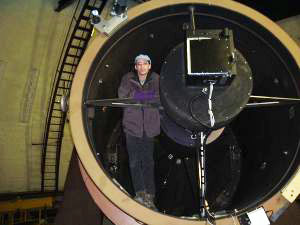Making Every Photon Count
 Last week I went to a talk given by the leader of the Supernova Factory collaboration at LBNL. What is SN factory? This is an ambitious project to study supernovae like never before. I mentioned this project briefly in a previous post , now that they are so close to releasing their results I want to discuss it a bit more.
Last week I went to a talk given by the leader of the Supernova Factory collaboration at LBNL. What is SN factory? This is an ambitious project to study supernovae like never before. I mentioned this project briefly in a previous post , now that they are so close to releasing their results I want to discuss it a bit more.
The main idea of this project is to study several hundred nearby supernovae using an instrument known as the Supernova Integral Field Spectrograph, or SNIFS. This type of instrument is essentially a blend between a traditional imaging camera and a spectrograph.
The resolution in an integral field spectrograph is defined in spaxels instead of the pixels that have become all too familiar with the advent of digital cameras. A spaxel is quite similar to a pixel, there aren't nearly as many and each one carries at least a 1000 times as much information.
In your digital camera, the light passes through the lens and directly onto the CCD. Each pixel on the CCD counts the number of photons in the red, the blue, and the green. Typically, there are millions of pixels, each counting photons from a slightly different region of the subject of your photograph.

 Spectrum of the first SN observed with SNIFS
Spectrum of the first SN observed with SNIFS